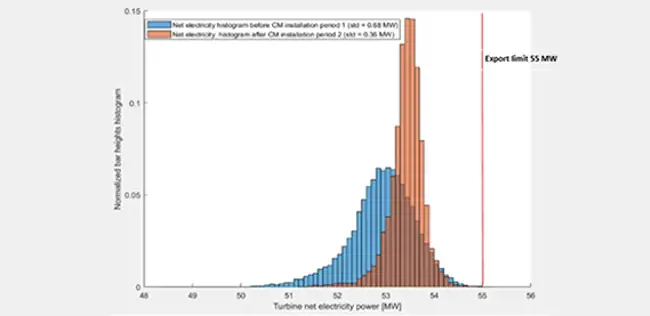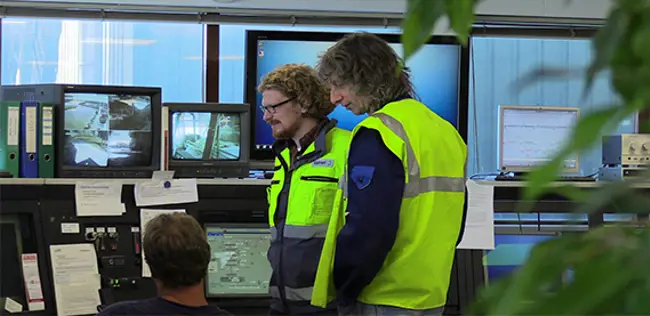Better process control, lower NOx emissions
Apr 4, 2019
Bord na Móna’s Edenderry Power Plant in Ireland has reduced its NOx emissions with an advanced process control application, Valmet DNA Combustion Manager.

Like many large combustion plants in the EU, the Edenderry Power Plant is faced with the challenge of lowering its NOx emissions and meeting a new projected 220 mg/Nm3 daily and 180 mg/Nm3 yearly limits defined by the Industrial Emissions Directive.
The 128 MWe plant, which started up in 2000, generates electricity by co-firing, with a typical energy mix of 60 percent peat and 40 percent biomass. Co-firing with biomass has produced impressive results and significantly reduced the plant’s carbon footprint over the years. The focus is now on NOx emissions.
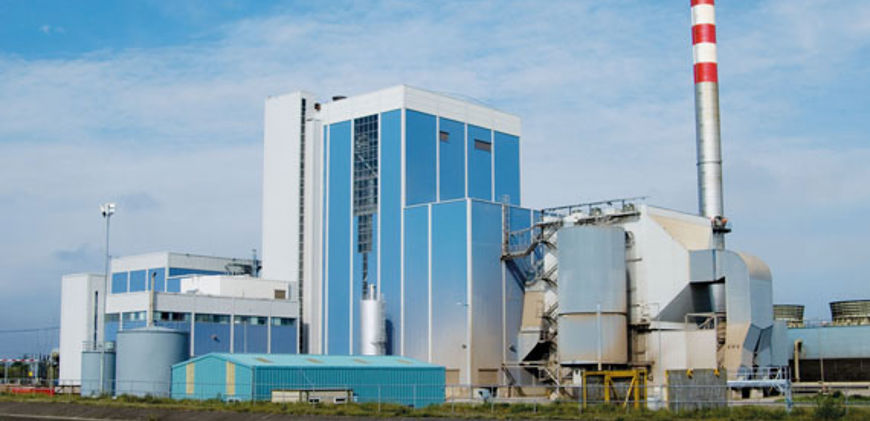
Edenderry Power Plant.
“With a reduction in our emissions coming into force during 2020, we needed to start a program for emission reduction and product selection. In conversations with Valmet’s Service Manager Nigel Earp and Business Development Manager Chris Heywood, we understood that Valmet had the ability to develop boiler controls which could improve boiler efficiency while lowering NOx and CO emissions,” says Padraig Nolan, Thermal Plant Manager at Edenderry.
The bubbling fluidized bed (BFB) boiler was built by Valmet (Kvaerner at the time) in 1999, and cooperation has continued over the years in various improvement projects. “Valmet has proven a reliable supplier of services and has always stayed with us to ensure the service they promised is delivered and if possible exceeds their original promises. The automation solution that Valmet proposed was the first installment of our de-NOx program, effectively picking up the low-hanging fruit,” Padraig points out.
Evaluating improvement potential
The NOx project started in 2017, with Valmet conducting a process improvement study to evaluate the potential for emissions reduction with the Valmet DNA Combustion Manager.
In early 2018, this advanced process control application for optimized combustion was installed in the plant’s existing Valmet DNA Automation System. It is based on the Industrial Internet and designed for a bubbling fluidized bed (BFB), circulating fluidized bed (CFB) and waste-to-energy boilers to manage the combustion process against variations in production, fuel amount, fuel quality and combustion circumstances.
“The project team worked very effectively and efficiently. We had the advantage of Valmet working with the original distributed control system (DCS) system, which minimized any potential complications that come with introducing unfamiliar packages,” Padraig says. “The project duration was accurate. We could see improvements as soon as the improved controls were implemented. Over the next few months, Valmet made some adjustments based on results and operator experience which could be completed while the unit was online.”
Lower CO levels and NOx emissions
The plant is very pleased with the results. “With the fuzzy logic now in place, the controllers are adjusting constantly, working together to ensure we have the fuel in the right place and air staging at the most optimal point. CO levels and NOx emissions have reduced, and this is the case right through the unit’s load range. As our minimum load is 35 percent of our maximal output, the efficiency improvement and NOx reduction at the lower load is significant. The solution is reliable, and the tweaks we work together on mean the improvements are ongoing,” Padraig continues.
The main benefits for the process include NOx and CO reduction, improved bed temperature control and higher efficiency. The 30 percent NOx reduction – 320 tonnes per year – is equivalent to the emissions of approximately 100,000 diesel cars.
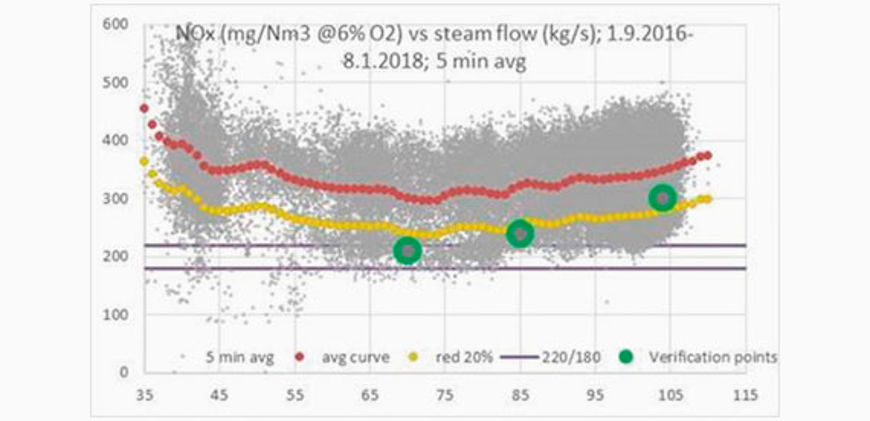
Average NOx level as function of boiler load before optimization project (including verification points used for estimating tuning potential).
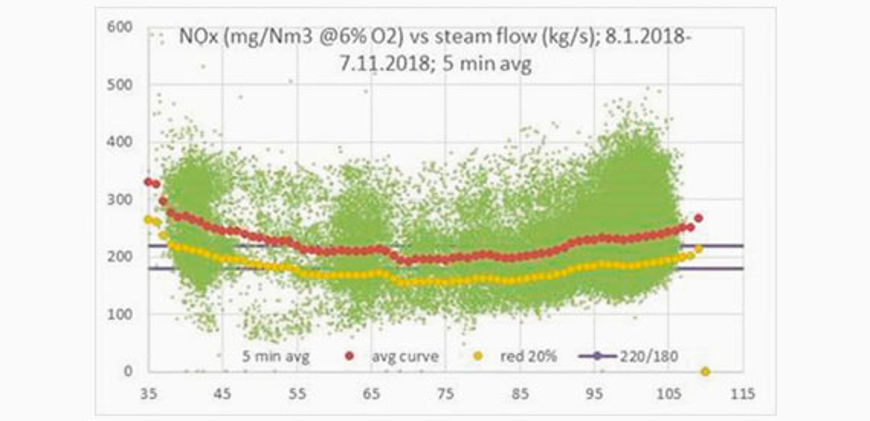
Average NOx level as function of boiler load after optimization project. NOx level reduced by 20-30 percent. At medium load, range emission limits are met without the requirement of secondary control measures. At minimum and maximum load, the general NOx level is sufficiently reduced for the emission limit to be met utilizing the upcoming SNCR system.
“This project is a good example of utilizing combustion optimization and advanced control systems as part of the Best Available Technology (BAT) to meet more stringent emission and efficiency requirements,” adds Matts Almark, Product Manager, Power Plant APC, Valmet.
“The 30 percent NOx reduction equals the emissions of approximately 100,000 diesel cars.”
Results exceed expectations
Valmet’s expertise in control technology was spot on for the plant’s requirements. Padraig continues: “The team displayed a deep understanding of our process and equipment. This gave us comfort in allowing the guys to make the adjustments during the test phase. The results speak for themselves; we have seen results that consistently exceed the original expected improvement, meaning the second phase of NOx reduction, which will be in place toward the end of this year, will have an easier task in achieving our new limit.”
NOx reduction was the plant’s top priority for this project. “We never expected to achieve the new 2020 limit but had hoped to make improvements which meant the next phase of NOx reduction could be achieved. The high capital cost associated with a Selective Catalytic Reduction (SCR) system and the fact we have biomass in the fuel stream meant an SCR was not an option for us, so we are currently installing a Selective Non-Catalytic Reduction (SNCR) system which will complement the Valmet solution in achieving our target. Process stability has improved with the improved controls.”
Padraig thinks highly of the cooperation with Valmet. “We found the Valmet guys open to sharing information and listening to the experience of our teams, which fed into the testing and programming of the package. We find it comforting that the team reviews the performance of the solution, and that their recommendations are based on the findings.”
TEXT Marjaana Lehtinen
PHOTOS Edenderry Power Plant and Matts Almark
Article published in Forward magazine 2/2019.
Related articles
